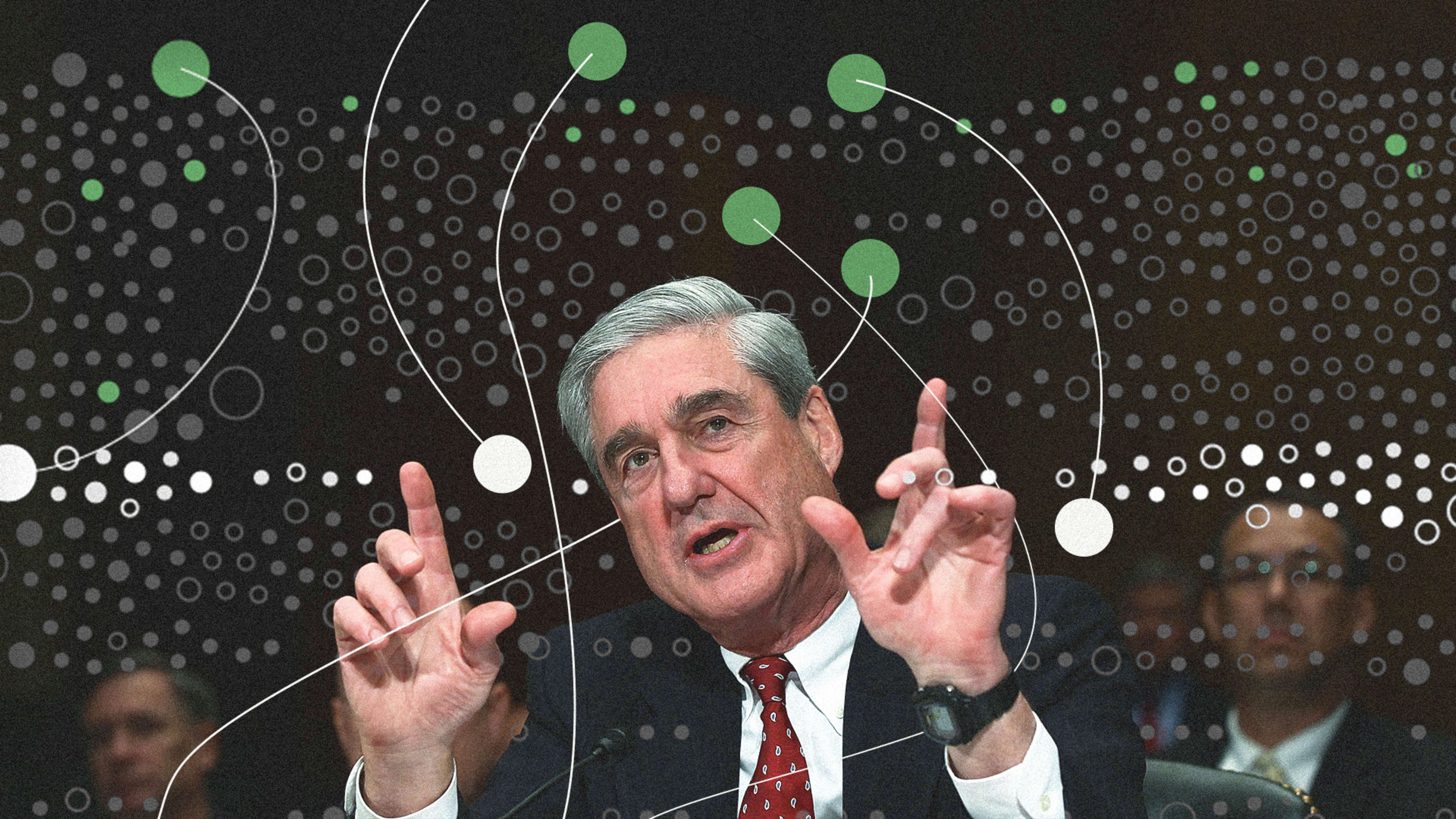Special counsel Robert Mueller is leading a vast investigation to discern whether Russia interfered with the 2016 election, and whether Trump’s campaign may have colluded with Kremlin officials. Nearly two years into that investigation, Mueller’s work has led to “199 criminal charges, 37 indictments or guilty pleas, and five prison sentences,” as summarized by Axios. And I’ll be the first to admit that, despite following the news drip daily, I’ve almost completely lost my bearings on what’s going on.
Now, data design firm Fathom has released an interactive graphic to help make some sense of the most important investigation of our era. Dubbed Porfiry, it uses algorithms to analyze news pieces and court documents to generate an incredible, interconnected timeline of the investigation, allowing you to scroll over any person involved–like Donald Trump–and see when other names, like Paul Manafort, appeared in the same news cycle.
[Screen Capture: Fathom]“The main idea behind this project was to experiment with ways of understanding text documents as collections of individual data points that can be reorganized to uncover connections that might not be obvious from reading them,” the studio’s spokesperson said via email. “In this piece, for example, by organizing the text around people and dates, rather than discrete documents, we’re able to quickly uncover patterns and histories of interactions between people that would otherwise require extensive reading and a good memory.”

“We also agree that it can still feel pretty overwhelming,” Freiman admits. “There’s a lot going on in this document set, and we’re still experimenting with unique ways to help people quickly understand and visualize the information it contains.”
In any case, Porfiry is very much worth checking out all the same, if only to remind us all why investigations like this take years, not weeks.
Recognize your brand’s excellence by applying to this year’s Brands That Matter Awards before the early-rate deadline, May 3.
